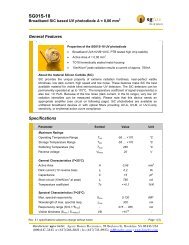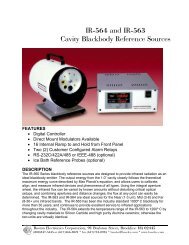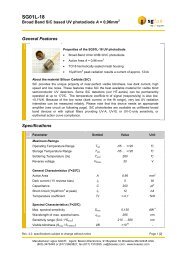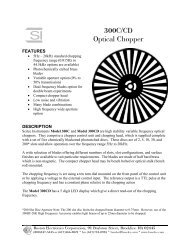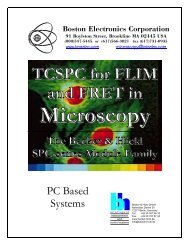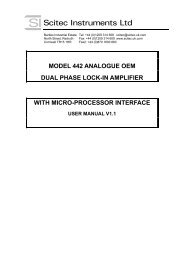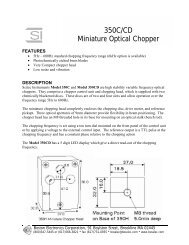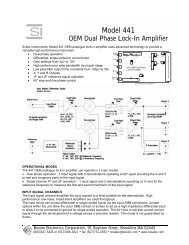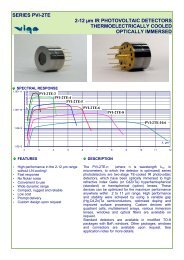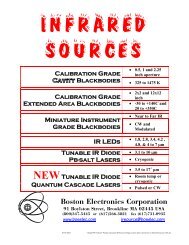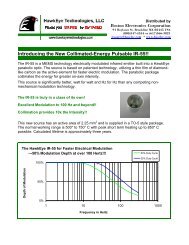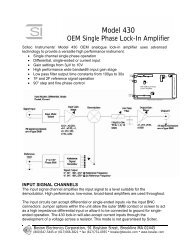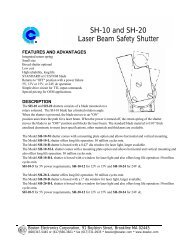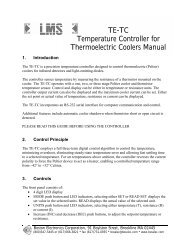IR Detectors from Vigo System - Boston Electronics Corporation
IR Detectors from Vigo System - Boston Electronics Corporation
IR Detectors from Vigo System - Boston Electronics Corporation
Create successful ePaper yourself
Turn your PDF publications into a flip-book with our unique Google optimized e-Paper software.
Page 4 of 8\\snap105913\SHARE1\Product Literature\<strong>Vigo</strong>\<strong>Vigo</strong> brochure parts\<strong>Vigo</strong> predicting the performance of a photodetector docdecreases. However, the difficulty in constructing following amplifier electronicsthat are significantly lower in noise than the photodetector results in system alwayshaving a noise at high frequencies that is no better than noise at low frequencies.The following set of graphs illustrates this.To predict low frequency performance of a photoconductor, the extent towhich D* is degraded by 1/f noise must be estimated. Either of the following waysis applicable:1. use the manufacturer’s published graphical data of D* versus frequency todetermine the multiplication factor N excess to use to convert minimum guaranteedD* at its measured frequency to D* at the frequency of interest.2. use the 1/f “corner frequency”f corner > f low reported by the manufacturer toestimate the degradation factor at f low asexcess noise factorfcornerNexcess (equation 4)flowIn contrast to photoconductors, photovoltaic detectors normally have no 1/fnoise. Signal is flat to or near DC and therefore D* is constant below the highfrequency roll-off region, so no low frequency correction need be made.<strong>Boston</strong> <strong>Electronics</strong> <strong>Corporation</strong>, 91 Boylston Street, Brookline MA 02445(800)347-5445 or (617)566-3821 * fax (617)731-0935 * boselec@boselec.com * www.boselec.com



